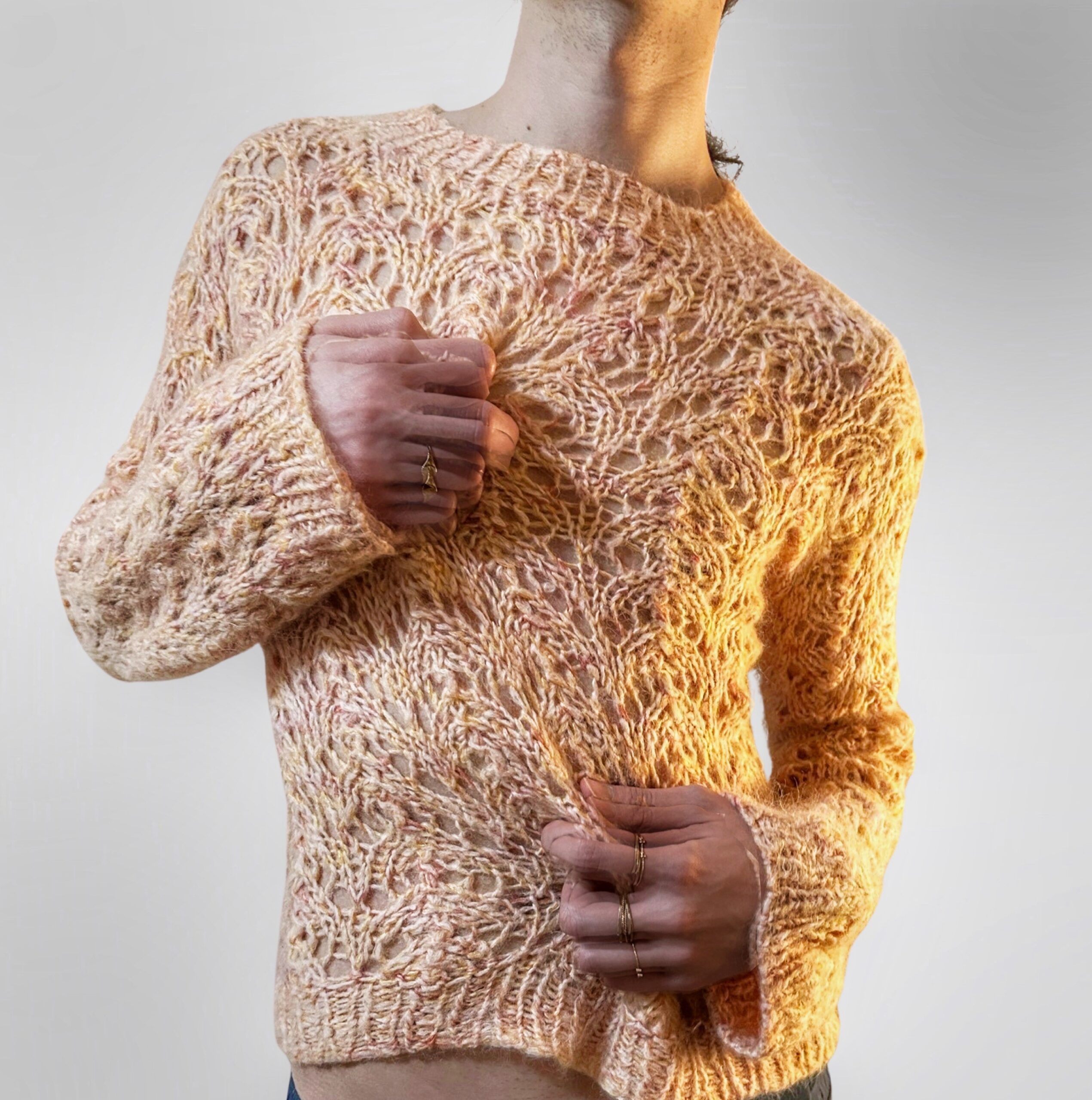2024 Grand Prize – Eric Bui

Granulation
Hand-knitted item and supplementary photograph
Abstract
As an undergraduate, I studied the complex processes of wound healing. The granulation phase of wound healing is pivotal to scar formation. Inspired by the complexity of this tissue, this piece is a 50-hour hand-knitted garment constructed of suri alpaca, mohair, and silk. The intricate fishtail composition draws from ancient and contemporary techniques, reflecting the controlled proliferation of capillaries and connective tissue in wound remodeling. In medical school, the pace of learning often outpaces our ability to reflect upon the beauty in the human body. I urge the viewer to consider their body, its fragility, and its resilience.
Mouse wounds exhibit a distinctive healing pattern, primarily closing inwards due to contraction from the muscular panniculus carnosus. The assessment of healing in mice is based on the wound diameter during closure. In contrast, human wounds are more complex, healing both inward and upward from the wound base through the formation of granulation tissue.
Granulation tissue is a spongy layer of new tissue growth that plays a pivotal role in human wound closure. Within this tissue, new blood vessels are laid down (angiogenesis) alongside tendrils of connective tissue (collagen III) stretching across the wound. New capillaries and vessels connect with existing ones, leading to the development of mature tissue. The human body showcases remarkable regenerative abilities, and the finished scar stands as a testament to survival and resilience.
Inspired by this granulation phase, my work embodies approximately 50 hours of meticulous hand knitting. The warm and delicate suri alpaca fiber denotes connective tissue and new cells, reflecting the fragility of this healing stage. Paired with it is a vibrant silk mohair yarn embodying new blood vessels. The saturation and gloss of the material capture the movement of erythrocytes within the developing capillaries.
Employing a traditional fishtail pattern transcribed by fiber artist Vanessa Fleming, intricate repeating motifs beautifully represent the meticulous control inherent in the biological process, creating an impression of the controlled proliferation of smaller units.
From a media standpoint, these fibers are rarely used together with lace technique. Natural animal fibers displaying “halo,” such as suri alpaca and mohair are undergoing a resurgence in popularity, especially by Scandinavian artists. However, due to their distorting effects on stitch structure, they are seldom used in tandem for lace knitting.
This unconventional fiber combination was worked in the round in the lace technique, creating a devastating openwork of color and texture variations that stretch across the form. The outcome is a garment that conforms snugly to my body, mirroring the layers of skin (and scars) beneath.
